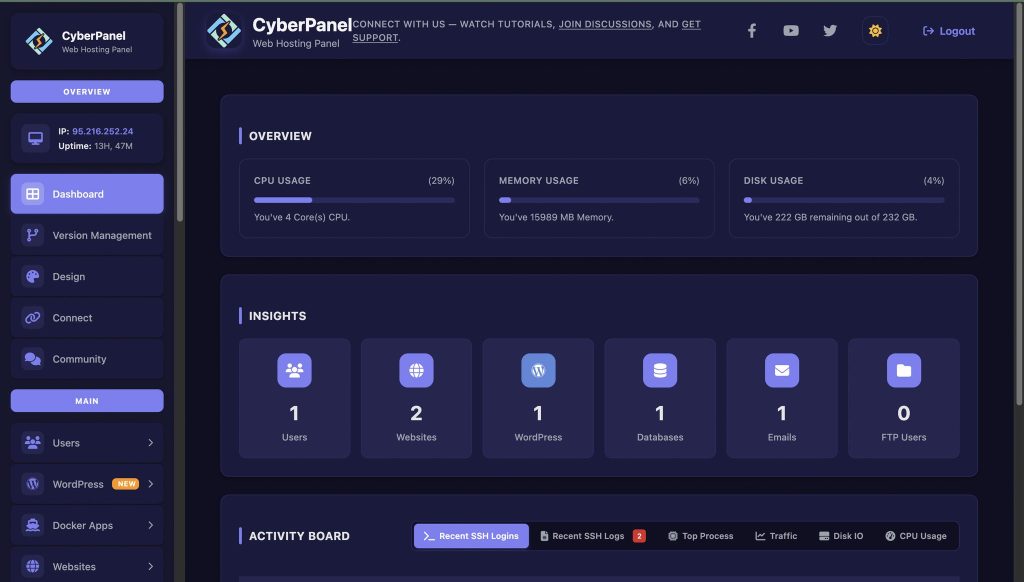Establishing reliable and private networks between servers, containers, and devices can be a significant hurdle. Tailscale Docker changes that. Tailscale allows you to run Tailscale inside containers and connect it to your private mesh VPN without much configuration. It may help simplify server access, secure containers, or build a private lab. Tailscale provides a nice solution when used with Docker. In this article, we’ll talk about how it works, what the benefits are, and how to use it in different ways.
Let’s learn together!
What is Tailscale Docker?
Tailscale Docker is the Tailscale (zero-config VPN) integration inside Docker containers. It allows containers to join your Tailscale network securely, enabling apps, VMs, servers, and cloud resources to communicate privately.
How Can I Use Tailscale with Docker Compose?
Tailscale Docker Compose is an easy way to run Tailscale in containers. You can declare your Tailscale container and your network configuration in a docker-compose.yml file. Once it’s created, all defined services can connect over the secure Tailscale network.
Tailscale in Docker Ubuntu Guide
Running Tailscale on Docker Ubuntu is easy. First, ensure you have Docker and Docker Compose installed on Ubuntu, then pull the Tailscale image, and finally authenticate. With Tailscale, your Ubuntu-based containers will securely access private resources. It works across multiple environments while enabling important encrypted connections.
What is Tailscale Docker Integration?
It’s integration refers to running Tailscale in either a “sidecar” container or running it directly in an app container. In either case, this configuration allows each container to have a unique Tailscale IP, and makes communication between devices seamless. Tailscale uses a Docker integration to avoid exposing services to the public over the Internet.
Get exclusive access to all things tech-savvy, and be the first to receive
the latest updates directly in your inbox.
What is a Tailscale Docker Container?
It is just a containerized instance of Tailscale. It authenticates your Tailscale account, assigns a private IP, and routes traffic securely. This is particularly useful for microservices, Kubernetes pods, and cloud servers.
Example: Running Tailscale using Docker Compose
version: "3"
services:
tailscale:
image: tailscale/tailscale:stable
container_name: tailscale
volumes:
- /var/lib:/var/lib
- /dev/net/tun:/dev/net/tun
cap_add:
- NET_ADMIN
- SYS_MODULE
command: tailscaled
Output:
Once started, the container will log a URL for authentication. After logging in, your container will appear in your Tailscale network with its own private IP.
The Function of Tailscale Docker with CyberPanel

Joining Tailscale Docker together with CyberPanel, a web hosting control panel, will provide a secure and easy way to manage web hosting servers. You can create a Tailscale network to attach the servers running CyberPanel, admin access, and client websites are available on secure VPNs! This removes the unauthorized exposure of ports, builds, and helps improve the security of the server.
Final Thoughts!
Using Docker Tailscale is one of the simplest methods to ensure container communication is secure between devices and servers, either by using Tailscale Docker Compose running in Ubuntu or by deploying Tailscale Docker containers in isolation. This setup is easy to implement and provides a powerful result. If you want secure, encrypted networking for your containers and wish for a private and pain-free approach, I would highly suggest trying this approach!
People Also Ask
Is Tailscale free for Docker containers?
Yes, Tailscale offers a free tier that works well for personal Docker setups.
Can I use Tailscale Docker for self-hosted apps?
Yes, you can run private apps inside containers and access them securely over Tailscale.
How do I persist Tailscale authentication in Docker?

Mount /var/lib as a volume so the authentication keys are saved.
Does Tailscale Docker work with Kubernetes?
Yes, Tailscale can run as a sidecar in Kubernetes pods for secure networking.



